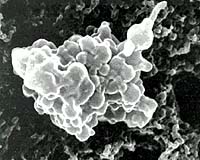| . |  |
. |
Washington (AFP) Dec 3, 2010 The US government on Friday proposed listing six types of seals as "threatened" under the Endangered Species Act because they face hardships due to disappearing sea ice and melting snow packs. Four types of ringed seals that live in the Arctic basin and North Atlantic, as well as two populations of bearded seals in the Pacific Ocean, are among those put forward by the National Oceanic and Atmospheric Administration (NOAA). One of the five recognized subspecies of ringed seals, the Saimaa in Finland, is already listed as endangered. "Under the proposed rules published today in the Federal Register, the remaining four subspecies of ringed seals -- Arctic, Okhotsk, Baltic and Ladoga -- would all be listed as threatened," NOAA said in a statement. Arctic ringed seals spend most of their lives on sea ice and they tend to give birth to one pup per year. "Ringed seal pups are normally born in snow caves in the spring, and are vulnerable to freezing and predation without them," NOAA said. "That the species produces only a single pup each year may limit the ringed seal's ability to respond to environmental challenges, such as the diminishing ice and snow cover." NOAA said the bearded seals in the Pacific "are closely associated with sea ice, particularly during the reproduction and molting stages." It noted forecasts predict the ice will decrease "substantially" this century, especially in the Sea of Okhotsk of the western Pacific Ocean. "The Pacific subpopulation of bearded seals are at risk of becoming endangered species within the foreseeable future throughout all or a significant portion of their ranges, warranting a listing as threatened," NOAA's Fisheries' Service said. The US government considers species to be "threatened" if they are likely to become endangered in the future. The bald eagle and the Arctic polar bear are among the animals on the threatened list.
Share This Article With Planet Earth
Related Links Darwin Today At TerraDaily.com
 UMass Microbiologists Evolve Microorganisms To Cooperate In New Way
UMass Microbiologists Evolve Microorganisms To Cooperate In New WayAmherst MA (SPX) Dec 03, 2010 University of Massachusetts Amherst microbiologists Derek Lovley, Zarath Summers and colleagues report in Science that they have discovered a new cooperative behavior in anaerobic bacteria, known as interspecies electron transfer, that could have important implications for the global carbon cycle and bioenergy. The scientists found that microorganisms of different species, in this case two ... read more |
|
| The content herein, unless otherwise known to be public domain, are Copyright 1995-2010 - SpaceDaily. AFP and UPI Wire Stories are copyright Agence France-Presse and United Press International. ESA Portal Reports are copyright European Space Agency. All NASA sourced material is public domain. Additional copyrights may apply in whole or part to other bona fide parties. Advertising does not imply endorsement,agreement or approval of any opinions, statements or information provided by SpaceDaily on any Web page published or hosted by SpaceDaily. Privacy Statement |